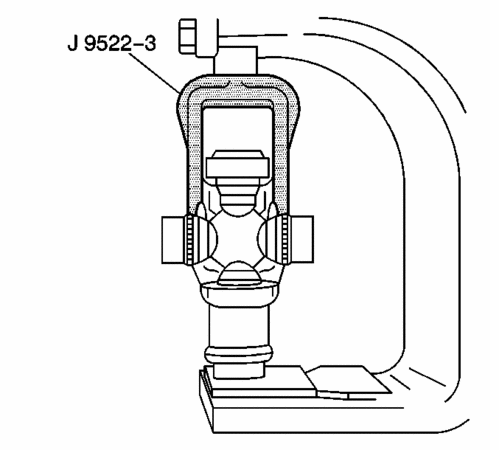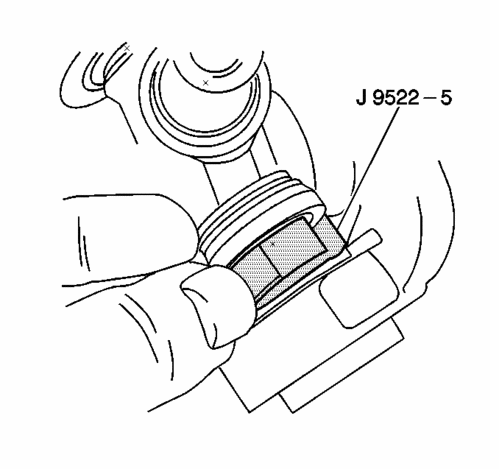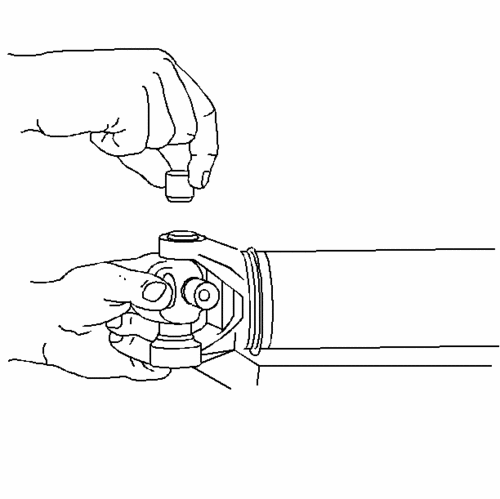Driveline TSB's
--------------------------
--------------------------
Clunk, Bump or Squawk when Vehicle Comes to Complete Stop or Accelerating from Complete Stop or Accelerating from Complete Stop (Replace Rear Drive Shaft Nickel-Plated Slip Yoke) #01-04-17-004B - (Jan 5, 2005)
1999-2000 Cadillac Escalade (Old Style)
2002-2004 Cadillac Escalade, Escalade EXT
2003-2004 Cadillac Escalade ESV
1996-1999 Chevrolet 1500 Series Extended Cab Short Box Pickup (Old Style)
1996-1999 Chevrolet 1500 Series Regular Cab Pickup and Utility Models (Old Style)
1999-2002 Chevrolet Silverado Extended Cab Short Box (New Style)
1999-2004 Chevrolet Silverado 1500 Series Regular Cab (New Style)
2000-2004 Chevrolet 1500 Series Avalanche, Suburban and Tahoe
2001-2004 Chevrolet Silverado 2500/3500 Series Regular Cab with Long Bed or Extended Cab (New Style)
2001-2004 Chevrolet Silverado 2500 Series Crew Cab, Short Box (New Style)
1996-1999 GMC 1500 Series Extended Cab Short Box Pickup (Old Style)
1996-1999 GMC 1500 Series Regular Cab Pickup and Utility Models (Old Style)
1999-2002 GMC Sierra Extended Cab Short Box (New Style)
1999-2004 GMC Sierra 1500 Series Regular Cab (New Style)
2000-2004 GMC 1500 Series Yukon, Yukon XL
2001-2004 GMC Sierra 2500/3500 Series Regular Cab with Long Bed or Extended Cab (New Style)
2001-2004 GMC Sierra 2500 Series Crew Cab, Short Box (New Style)
2003-2005 HUMMER H2
with Four Wheel Drive (4WD) or All Wheel Drive (AWD) and One-Piece Propeller Shaft ONLY
This bulletin is being revised to add Cadillac Escalade (Old Style) and HUMMER H2 to the Models section. Please discard Corporate Bulletin Number 01-04-17-004A (Section 04 -- Driveline/Axle).
Condition
Some customers may comment on a clunk, bump or squawk noise when the vehicle comes to a stop or when accelerating from a complete stop.
Cause
A slip/stick condition between the transfer case output shaft and the driveshaft slip yoke may cause this condition.
Diagnostic Tips
There are several resources in the electronic Service Information System which can provide the technician with information on diagnosis and repair of clunk conditions, and fix the customer's vehicle right the first time without unnecessary parts replacement. Some of the documents available in SI include:
? Symptoms - Propeller Shaft (SI Document ID #697266)
? Knock or Clunk Noise (SI Document ID #697290)
? Rear Drive Axle Noises (SI Document ID #700580)
? Launch Shudder/Vibration on Acceleration (Replace Propeller Shaft and Install a New Pinion Flange/Seal), Bulletin #02-04-17-001
? Information on 2-3 Upshift or 3-2 Downshift Clunk Noise, Bulletin #01-07-30-042
? Driveline Clunk When Stopping (Reprogram Powertrain Control Module (PCM), Bulletin #03-07-30-028
Correction
Replace the rear drive shaft slip yoke with a new nickel-plated slip yoke. See the parts table below.
Follow the service procedure below.
1. Raise the vehicle on a hoist. Refer to Lifting and Jacking the Vehicle in General Information (SI Document ID #34991
2. Reference mark the propeller shaft to the pinion flange connection.
Important: Do not pound on the propeller shaft yoke ears. Never pry or place any tool between a yoke and a universal joint.
3. Remove the bolts and the yoke retainers from the pinion flange.
4. Slide the propeller shaft forward and out of the rear pinion flange.
5. Lower the rear of the propeller shaft and pull the driveshaft out of the transfer case.
Notice: Never clamp propeller shaft tubing in a vise. Clamping could dent or deform the tube causing an imbalance or unsafe condition. Always clamp on one of the yokes and support the shaft horizontally. Avoid damaging the slip yoke sealing surface. Nicks may damage the bushing or cut the lip seal.
6. Support the propeller shaft in a line horizontal with the table of a press.
Important: Remove the front slip yoke and the universal joint together. The new nickel-plated slip yoke comes with a new universal joint.
7. Disassemble the snap rings by pinching the ends together with a pair of pliers.
8. If the ring does not readily snap out of the groove in the yoke, tap the end of the cup lightly in order to relieve the pressure from the ring.

9. Place the universal joint so that the lower ear of the yoke is supported on a 30 mm (1-1/8 in) hex head socket or a 27 mm (1-1/16 in) socket.

10. Place the J 9522-3 on the open horizontal bearing cups. Press the lower bearing cup out of the yoke ear.
11. If you do not completely remove the bearing cup, lift the cross and insert the J 9522-5 between the seal and the bearing cup you are removing. Continue pressing the bearing cup out of the yoke.
12. Rotate the propeller shaft . Press the opposite bearing cup out of the drive shaft yoke.
13. Remove the old slip yoke and universal joint.
14. Inspect the retaining ring grooves for dirt, corrosion, or pieces of the old ring.
15. Inspect the bearing cup bores for burrs or imperfections.
16. Clean the retaining ring grooves. Corrosion, dirt, rust, or pieces of the old retaining ring may prevent the bearing cups from pressing into place or prevent the bearing retainers from properly seating.
17. Install the new nickel-plated slip yoke and universal joint. See parts table below for parts information.
18. Remove the bearing cups from the universal joint.

19. Assemble one bearing cup part way into one side of the yoke. Turn the yoke ear toward the bottom.
20. Assemble the cross into the yoke so that the trunnion seats freely into the bearing cup.

21. With the trunnion seated in the bearing cup, press the bearing cup into the yoke until the bearing cup is flush with the yoke ear.
22. Install the opposite bearing cup part way into the yoke ear.
23. Ensure that the trunnions start straight and true into both bearing cups.
24. Press the opposite bearing cup into the yoke ear while working the cross all the time in order to inspect for free unbinding movement of the trunnions in the bearing cups.
Important: If there seems to be a hang up or binding, stop pressing. Inspect the needle bearings for misalignment in the bearing cup.
25. Press the bearing cup into the yoke until the bearing cup retainer groove is visible over the top of the bearing cup.
26. Assemble the bearing retainer in the retainer groove.
27. Continue pressing until both retainers can be snapped into place.

28. If the retainer is difficult to seat, the yoke can be sprung slightly with a firm blow from a soft-faced dead blow hammer.
29. It may be necessary to lubricate the snap ring with a slight amount of chassis grease so that the snap ring seats in the bearing cup groove.
30. Install the slip yoke onto the output shaft in the transfer case.
31. Align the reference marks on the pinion flange and the propeller shaft.
32. Install the yoke retainers and bolts.
Tighten
Tighten the yoke retainer bolts to 25 N?m (19 lb ft).
33. Lower the vehicle.
Parts
12479383 Yoke Asm., Prop Shf Slip (without u-joint) , Nickel Plated. Must Be Ordered With U-Joint Kit P/N 12479126 - 4WD/AWD 1500 Series Suburban, Avalanche, Yukon XL, Escalade EXT, Escalade ESV with AWD (New Style)
12479126 U Joint Kit: 4WD 1500 Series Suburban, Avalanche, Yukon XL) (Escalade EXT, Escalade ESV with AWD (New Style)
Edit: Touch-up formatting.

